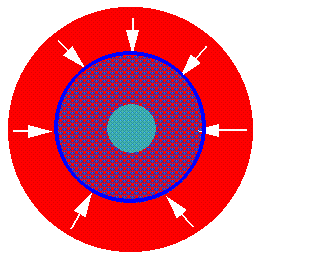
 Can convection behind the stalled shockwave help drive a supernova
explosion?
Can convection behind the stalled shockwave help drive a supernova
explosion?

A supernova begins when the nuclear fusion stops at Iron in the core
of a massive star. With no energy source to keep the core hot, gravity
overwhelms the gas pressure and the core begins to collapse.

When the core reaches nuclear density the violent collapse of the
core is halted, but the rest of the star has started to implode.
The infalling material hits the collapsed core producing a
shock wave.

This shock travels out to about 200 km before it
is stalled by the continuing infall of stellar material raining
down on the core. The region inside of the shock wave is unstable
to convection, and current research has focussed on the possibility
that convection in this region can help drive the shock the rest
of the way out of the star.